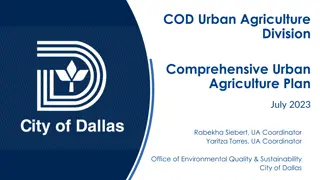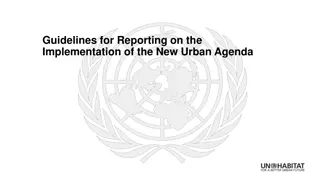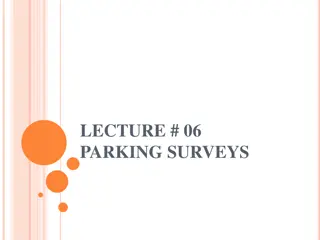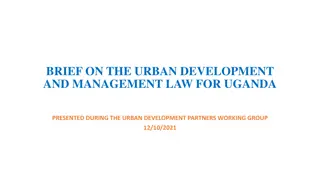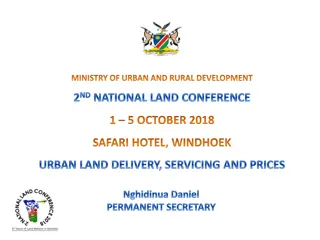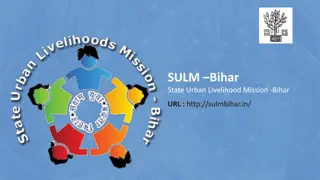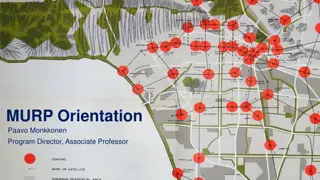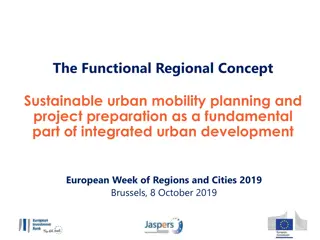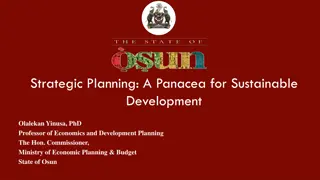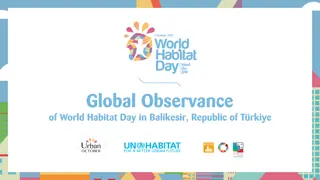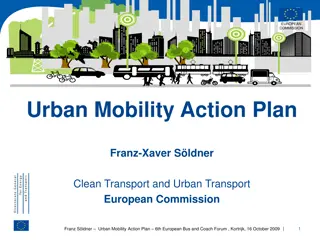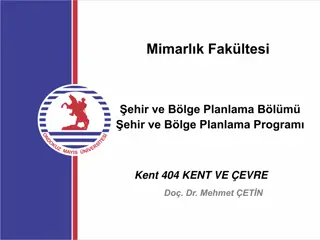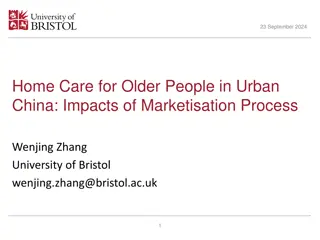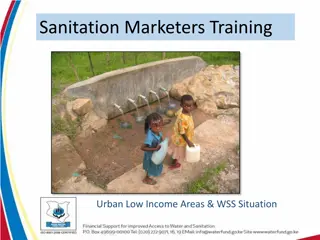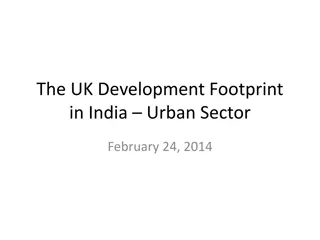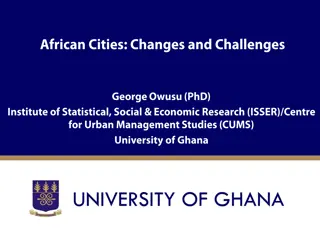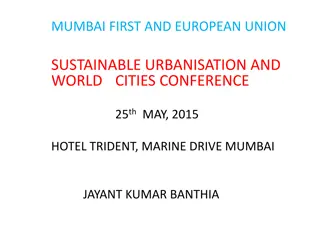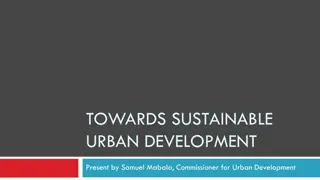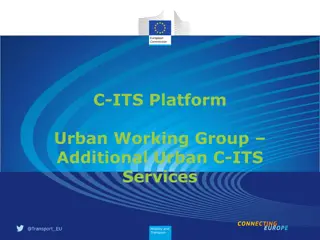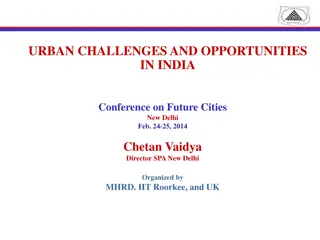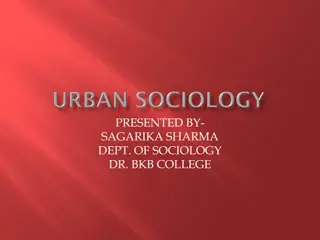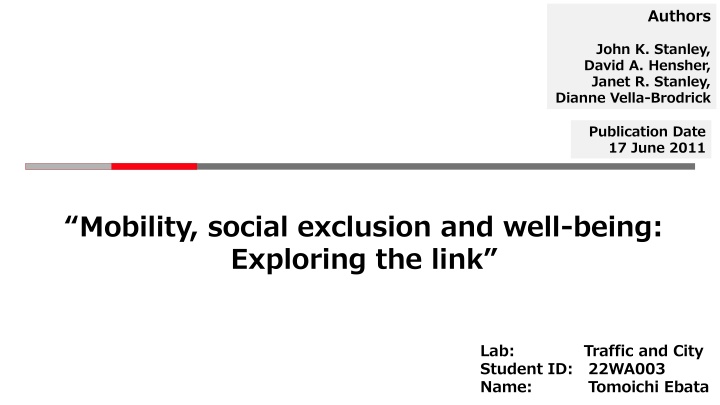
Well-Being Through Mobility and Satisfaction Studies
Explore the link between mobility, social exclusion, and well-being through studies on satisfaction with daily travel. Learn about different definitions of well-being, including cognitive and affective aspects, and how they are influenced by daily mobility experiences. Discover the impact of satisfaction with daily mobility on emotional and cognitive well-being.
Download Presentation

Please find below an Image/Link to download the presentation.
The content on the website is provided AS IS for your information and personal use only. It may not be sold, licensed, or shared on other websites without obtaining consent from the author. If you encounter any issues during the download, it is possible that the publisher has removed the file from their server.
You are allowed to download the files provided on this website for personal or commercial use, subject to the condition that they are used lawfully. All files are the property of their respective owners.
The content on the website is provided AS IS for your information and personal use only. It may not be sold, licensed, or shared on other websites without obtaining consent from the author.
E N D
Presentation Transcript
Authors John K. Stanley, David A. Hensher, Janet R. Stanley, Dianne Vella-Brodrick Publication Date 17 June 2011 Mobility, social exclusion and well-being: Exploring the link Lab: Student ID: 22WA003 Name: Traffic and City Tomoichi Ebata
Review of the previous presentation Subjective well-being related to satisfaction with daily travel Authors Cecilia Jakobsson Bergstad Amelie Gamble Tommy Garling Olle Hagman Merritt Polk Dick Ettema Margareta Friman Lars E. Olsson Publication Date 27 May 2010 Review of Subjective well-being related to satisfaction with daily travel Lab: Student ID: Name: Traffic and City D22WA003 Tomoichi Ebata
0-1. Terminology Term Outline Others Health is a state of complete physical, mental and social well-being and not merely the absence of disease or infirmity. Health Definition by WHO A state of happiness and fulfillment in all aspects of life: physical, mental, and social Well-being Using this icon Fulfilment of one's wishes, expectations, or needs, or the pleasure derived from this. Satisfaction Using this icon Positive emotions Motivation and immersion Awareness of self Mindfulness Psychological resistance/resilience Empathy Compassion and altruistic behavior Similar Satisfaction Well-being
0-2. Definitions Ebata s understanding No concept of "happiness that can be compared to others" Term Contents No definition of "happiness" at all Answer "How happy do you feel about yourself" Clarification Hence, the "survey" is the main focus. Based on an individual's (self-imposed) assessment of well-being Also known as "life satisfaction Self-evaluations of other specific domains of life in general, such as work, consumption, health, relationships with family and friends, and leisure time (domain-specific SWB). Subjective Well- Being : SWB) (A)Cognitive SWB Personal "happiness" based on the "rules of our own happiness" Two SWBs (B)Affective SWB Positive emotions of joy, fulfillment, enjoyment Negative emotions such as sadness, anger, disappointment Response portion of the individual as determined from the above multidimensional Happiness" based on feelings that arise spontaneously inside us, non-logically, without even rules within us.
0-3. Conclusions The impact of satisfaction with daily mobility (STS) on emotional and cognitive SWB is both direct and related by satisfaction with activity performance (SAS) Direct SWB STS Indirect SAS Car use plays only a minor role in satisfaction with daily mobility and its impact on SWB SWB STS Small effect Weekly use SWB Daily Satisfaction
1-1. Background(1) Links between mobility and social exclusion have been realized Negative relationships Education Medical Employment Social Exclusion Without using car Grocer Sports Leisure Culture (Cartmel and Furlong, 2000; Hine and Mitchell, 2003; Cass et al., 2005; Preston and Rae, 2007). Good social relationships Major Government Policies Increased productivity Reduced care costs SWB (Keyes and Grzywacz, 2005; Lyubomirsky et al, 2005)
1-2. Background(2) Relationship between Transportation Mobility and Happiness Education Medical Employment Transport Mobility Serves Psychological well-being Grocer Sports Leisure Culture Paper Outline Others Mollenkopf et al., 2005 How transport mobility contributes towards enhanced quality of life Convenience of transportation is positively correlated with quality of life Bergstad et al. 2011 Emotional, social, and psychological aspects related to transportation mobility are receiving attention Mobility of transit agencies has not consistently proven beneficial Satisfaction with activity performance also found to mediate this relationship Participation leads to a sense of independence. Transportation has a greater purpose than just simply moving from one place to another Spinney et al., 2009 Cantor and Sanderson (1999) Participation in all tasks of life is important to well- being
1-3. Background(3) Self-Determination Theory (Deci and Ryan, 1985) claims that people are motivated to achieve the following three factors factors We belief that one has the resources to achieve important outcomes (2)Relatedness We have supportive and satisfying social relationships We feel an undertaking activities based on choice, self- determination Outline (1)Competence (3)Autonomy These three factors lead to our health(Deci and Ryan, 2000
1-4. Background(4) Model of Psychological Well-being (Ryff's 1989) Comprehensive framework for assessing psychological factors as follows factors Outline One's self-determination, ability to sustain individuality, self evaluation and regulation of one's own behavior and personal standards A sense of competence and mastery and the ability to shape surroundings to meet needs. (1)Autonomy (2)Environmental mastery (3)Personal growth (4)Positive relations with others A sense of continued development and potential, making the most of one's talents and openness to new experiences. One's experience of affectionate, trusting, empathetic relationships and an understanding of the reciprocity of relationships. A sense of goal directedness and life meaning and the belief in one's efforts. (6)Self-acceptance An awareness of one s limitations and have a positive self-attitude. (5)Purpose in life
2-1. Targets of this paper Previous studies of Mobility and Well-being Paper Target Results Mollenkopf et al., 2005 Spinney 2009 Extensive analysis of the relationship between mobility and subjective well-being among older adults in Europe. Investigating the relationship between mobility and well- being among older Canadians. Social exclusion is not covered. No mention of relationship between social exclusion and well-being Currie and Stanley, 2008 Survey on feeling connected to the community Targets of this paper are, (1)To develop a single/simple modeling framework of the relationship between mobility, social exclusion, and subjective well-being (2)To evaluate previous studies using the above framework. (3)To investigate the linkages between mobility, social exclusion, and well-being from the viewpoints of this new framework
3-1. Overview Experiment Field is Australia Two Areas in Australia (1)Demographics (2)Household composition (3)Risk factors for Social exclusion (4)Social capital and community ties (5)Subjective and psychological well-being (6)Personality (7)Transportation usage (8)Transportation difficulties Melbourne (metropolitan area) (N = 535) Latrobe Valley (rural areas of Victoria) (N = 148) Focus point (A)To cover people and places to face transportation difficulties (e.g many elders and youngers)
3-2. Overview(Cont) Characteristics Melbourne (metropolitan area) (N = 535) Latrobe Valley (rural areas of Victoria) (N = 148) Women, low-income households, and those living outside the city Households born abroad, low-income households, owning two or more cars Low use of public transportation in the region, Socially disadvantaged (N=336) Less spontaneous travel surveys These are conditions to ask to join the Household Survey on Well-being and Social exclusion
3-3. Overview(Cont) 100%
4. Social Exclusion A state in which, individuals are unable to participate fully in economic, social, political and. cultural life
4-1. Measuring risk of social exclusion Five indicators variables for risk of social exclusion, and related thresholds Modified 4 dimensions identified by the London School of Economics (Burchardt et al., 2002a,b) A Household income less than a threshold of $A500 gross per week. Employment status not employed, in education or training, nor looking after family or undertaking voluntary activities. Political engagement - did not contribute to/participate in a government political party, campaign or action group to improve social/environmental conditions for a year +1 Risk Point Participation Social support - did not attend one of the following: a library, sporting or exercise event, hobby, leisure or interest group, or arts or cultural event for a month +1 Risk Point - not able to get help if you need it from close or extended family, friends or neighbors. +1 Risk Point +1 Risk Point +1 Risk Point
4-2. Relations among the five dimensions of social exclusion All measurements are relatively independent Melbourne Latrobe Valley Income Employment status 0.11 0.18 0.06 0.03 0.00 -0.08 Political engagement The more a person is politically active, the more likely he or she is to participate in other activities. 0.18 0.15 0.07 0.04 0.32 0.27 Participation Social support 0.08 0.10 0.23 0.07 -0.02 -0.10 -0.04 0.19
4-3. Relations among the five dimensions of social exclusion Numbers of risk points from each respondent and factor Risk points of each respondent Risk points of each factor 50 40 Melborune Latrobe Valley Melborune Latrobe Valley 45 35 40 30 35 2/3 of total 25 30 20 25 15 20 10 15 5 10 5 0 0 Zero Income Employment Policial Participation Support None One Two Three Four Five engagement Employment is not a major factor Three major factors
5-1. About Social Capital Social Capital is a person's social network and views on both trust and reciprocity(Stone et al.) Factors How to measure Respondents keep in touch with those close to them (close relatives, extended family, friends / acquaintances) Respondents generally trust people (1)Social Network (2)Trust Respondents generally are to helped in the community (3)Reciprocity This is a Capital Realized by (e.g.) neighborly companionship Summer festival(Bon dancing) New Year's visit to a shrine - - Respondents were asked on a three-point scale of "never , "sometimes , "always." -
5-2. How to measure Social Capital in this study People feel more connected to their community when they become actively by participating in community(Vinson,2004 Paper Contents If they are in regular contact with significant others, feel attached to their community, are not low-income, mobile, and open to new experiences that allow them to grow on a personal level, they are less likely to be at risk of social marginalization Stanley et al. (2011) Spinney 2009 The value of almost $A20 for additional trips Introduced Sense of Community Index (Sarason (1974) McMillan and Chavis (1986)) Responses were measured on a seven-point scale ranging from "strongly disagree" to "strongly agree" A measure of different aspects to the community
6-1. How to measure Subjective Well-being Ryff's (1989): psychological well-being scale is consistent with the following perspectives factors Autonomy Environmental mastery Personal growth Positive relations with others Purpose in life Self-acceptance XXXX: 0,1,2, ,10 XXXX: 0,1,2, ,10 Responses are on a 7- point scale ranging from "completely dissatisfied" to "completely satisfied" SWB questionnaire SWB XXXX: 0,1,2, ,10 The above three factors were selected by at least 0.4 points on two or three subjective well-being variables
7-1. Hypothesized model structure Hypothesis 1. A person's risk of social exclusion is reduced if they don t have strong social capital, mobility, and high-income; 2. Subjective well-being improves with low risk of social exclusion, high levels of environmental mastery, positive peer relationships, self-acceptance, and a strong sense of community Psychological wellbeing: - Environment mastery - Positive relations with other - Self-acceptance Household income Trips Extraversion Social capital Age Sense of community Risk of social exclusion(SOCEX) Personal wellbeing(PWI) Mobility, social exclusion, and well-being: hypothesis relationship
7-2. Reasons of the model structure It was built from the results of statistical calculations and the contents of the previous studies Psychological wellbeing: - Environment mastery - Positive relations with other - Self-acceptance Household income Trips Trial Extraversion Social capital Age Sense of community Added Added (Van Praag and Ferreri-i Carbonell, 2004; Cummins, 2011 Strong relationships Strong relationships Diener et al. 1999 Risk of social exclusion(SOCEX) Personal wellbeing(PWI) Select three-step least squares (3SLS) Against the problem of "overidentification constraints in other equations not being taken into account when estimating the parameters of a single equation."
7-3. Metropolitan Melbourne (Data) Mean, standard deviation, and sample size for each variable The average age of all Victorians over 18 is 46 years-old . The survey sample is heavily weighted toward the elderly.
7-5. Metropolitan Melbourne (Modeling Results)(2) The lower the relative risk of social exclusion (SOCEX), the more personal well-begin they have C. A. Psychological wellbeing: - Environment mastery - Positive relations with other - Self-acceptance Household income B. Trips B. Extraversion Social capital Age Sense of community Age maintains PWI even as Extraversion declines Significant association with risk of social exclusion 0.2608 Schneider and Gibbins, 1982; Mroczek and Risk of social exclusion(SOCEX) Kolarz, 1998 A. C. Personal wellbeing(PWI) -0.2701 Extending the framework is not good It is easier to find the relations, separated social exclusion from personal wellbeing
7-6. Metropolitan Melbourne (Modeling Results)(3) Costs of Social Exclusion are different by travel and/or household income - Marginal utility of trips = 0.0404. - Marginal utility of household income = 2 * 0.000003910 HINCPD (HINCPD = Household income per day = $A211.70 at average full sample level). - Marginal rate of substitution between trips and household income (or marginal value of trip) = MUTRIPS/MUHINC (at average household income) = $A24.40. Almost same of the previous study(Van Praag and Ferrer-i- Carbonell 2004 ) Just one trip can result in a significant change(profit)
7-8. Regional Victorian(Modeling Results)(1) People in rural areas do not have the same psychological well- being of people in cities ? Three variables of personal well-being were not significant in PWI model Psychological wellbeing: - Environment mastery - Positive relations with other - Self-acceptance Household income Trips Risk of social exclusion Extraversion and age also significant Social capital Age Sense of community 0.27772 Risk of social exclusion(SOCEX) suggests stronger relations than Melbourne results Personal wellbeing(PWI) Community awareness -0.4694 People in rural areas may have fewer diverse experiences and opportunities?
8-1. Conclusion Significant relations between increased mobility (travel and activities) and reduced risk of social exclusion # Contents Ebata s Summary Risk of social exclusion may be reduced by policies and programs that promote the development of social capital, especially in metropolitan settings Risk of social exclusion is significantly associated with individual well-being in both metropolitan and regional area Increased mobility is an indirect means of potentially improving well-being Risk of social exclusion might be controllable 1 Few different results between urban and rural 2 3 Mobility improves well-being Community Activities improve Well-Being Fostering attachment to the community is also associated with improved individual well-being. 4 In proposed framework considered, the gains from new trips are significant. 5 Profits of travel are larger Numbers of trip is more important than the distance The cost of a trip should be more about the number of (short) trips than the distance. 6

